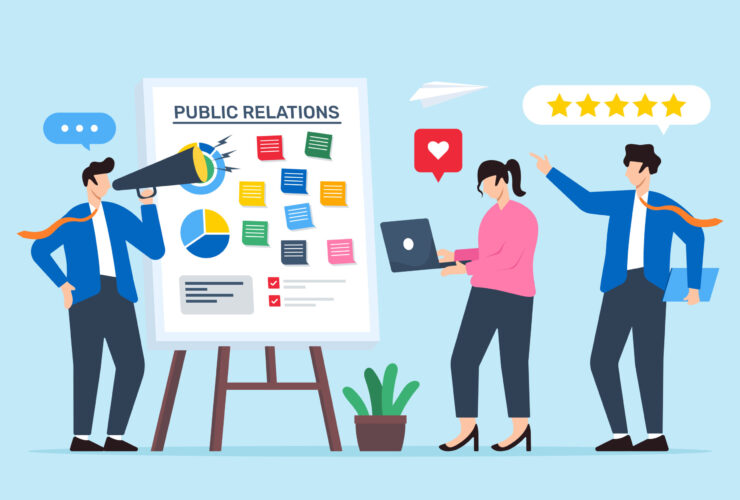Inbound marketing is centred around generating leads by creating content solely for your target market.
It requires you to align your marketing efforts with the specific needs, interests and preferences of your target audiences. So, rather than just relying on more generic, standard marketing techniques, inbound marketing will share targeted messages specifically designed to inform and capture the attention of your potential customers.
If done correctly, it can be a very cost effective form of marketing.
What’s the difference between inbound and outbound marketing?
In contrast to inbound marketing, outbound marketing is a more ‘in your face’ approach – using methods such as paid adverts and commercials to get the message out there as much as possible, to anyone and everyone who might be using that platform at the time.
While you may reach a wider audience by using outbound marketing, it can be less effective, as not everyone in this audience is your target, and you’re not building as solid a relationship with them as you would with inbound marketing.
Inbound marketing concentrates on bringing the customers to you through more subtle, passive avenues of communication. It’s essentially playing the long game of slowly building up an association and awareness of your brand among the most suitable groups so that you become firmly established within their minds.
There are pros and cons to both methods, and the best option will largely rely on your business goals, budget and objectives. We’ll go into more detail later…
What forms of inbound marketing are there?
Some of the most effective forms of inbound marketing include:
- Blogs
- Webinars
- Infographics
- Social media posting
- Landing pages
- Videos

The four stages of a solid inbound marketing strategy
If you want to get your inbound marketing right, you’ll need to have a good strategy in place. This includes being able to understand what your customers want, so you can create content that aligns with how they’re feeling. Here are the four stages of a typical inbound marketing strategy:
Attract visitors
The first stage is about attracting potential leads and making consumers more aware of what your firm has to offer. It involves creating content that adds value, alongside search engine optimisation (SEO) and social media engagement.
Convert visitors into leads
When your visitors become interested, you’ll then need to encourage them to find out more. This stage involves obtaining their contact information so that you can engage with them further. Tactics to convert visitors into leads include landing pages, opt-in forms and calls to action (CTA).
Nurture leads into customers
At this stage, you’ll reach out to your database of potential customers through various channels to showcase how your product(s) or service(s) will benefit them. To do this, you’ll use a combination of email marketing, customer relationship management (CRM) and marketing automation.
Delight your customers
Not only do you want your visitors to turn into customers, but you’ll also want to make sure they’re happy so they’ll become positive advocates for your business. This will help to encourage positive reviews and word of mouth recommendations. To do this, you’ll need to utilise customer support functions, social media listening and conduct surveys.
What are the pros and cons of inbound marketing?
There are many advantages of inbound marketing:
- It’s a lot more inexpensive than outbound marketing; mass marketing can get very costly!
- You’ll build more trust and credibility with potential customers
- You’ll gain high quality traffic and leads. With a more informed, targeted approach, you’ll attract people who are genuinely interested
- Have the opportunity to learn from your marketing efforts and evolve. By engaging and reading conversations among your target audience, you’ll gain valuable insight and feedback into how to improve your service
There are also some challenges to consider too. These include:
- Inbound marketing is a long game – it will take a significant amount of time before you’ll start seeing results, but they will come
- The environment is constantly evolving, so you’ll need to adapt your inbound marketing strategy accordingly to stay ahead of the competition
- Inbound marketing is not always the best option, especially if your offering is very specific
- It relies on your understanding of your target market and whether they really are the best group of people to be trying to sell to
- Trust is very limited in the beginning – it takes time to build. You’ll need to work hard to develop strong relationships, but it’ll be worth it in the end
Are you looking for some help with your inbound marketing strategy? Get in touch today for a consultation with one of our team.



